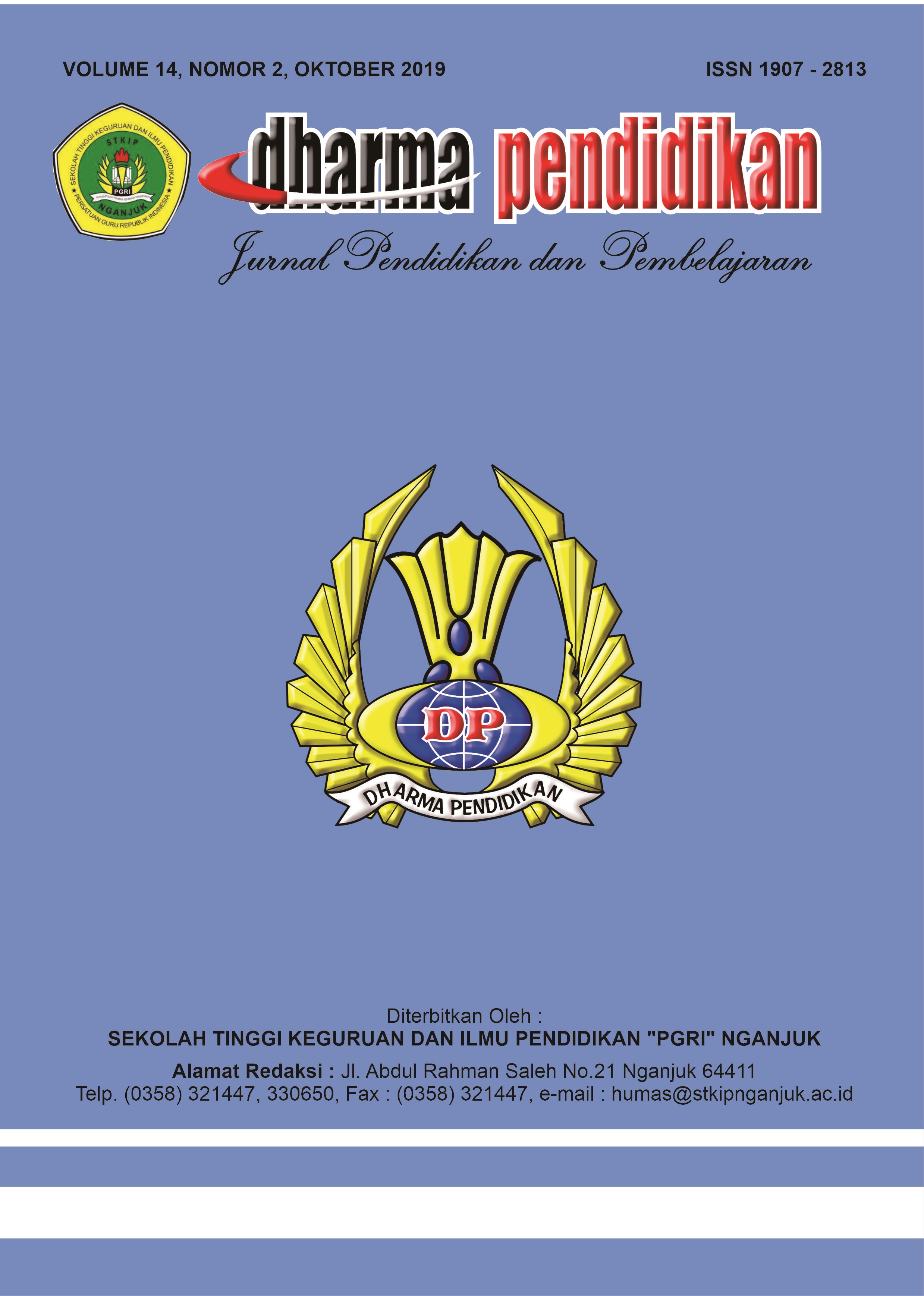Improving The Student’s Listening Skill By Notagy (Note Taking Strategy ) For The Twelfth Graders At SMK PGRI 2 Nganjuk
DOI:
https://doi.org/10.69866/dp.v14i2%20Oktober.8Keywords:
listening, note takingAbstract
Listening is one of the most difficult tasks of language. Listening is an active process of selecting and interpreting information from auditory and visual clues. Listeners remember the beginning of the sentence while proceeding to the end. It is difficult for the students to memorize well when they do listening task activity. The research thinks that the students need something to help them to memorize what they have been listened two seconds is not enough for them to remember what they have listened to answer some questions prepare for them. Note taking strategy helps students to write notes as they follow some spoken text. It will help them comprehend the message of the text. These notes can be in skeleton form or free form.(Vandergrift,L 1997). The researcher tries to conduct improving the student’s listening skill by Notagy ( note taking strategy) in doing the listening activities of the twelfth grade at SMK PGRI 2 Nganjuk.
This research uses classroom action research that covered planning, action, observation and reflection stage in cycle. The object of the research is XII accounting 1 which has 31 students. In Planning Stage, the teacher explained the students’ problem, especially in listening during teaching-learning process. The researcher was helped by colaborator who collected the note from teaching-learning process, the detail lesson plan for teaching listening was made to gain a better result. The data collection technique will be conducted by documentation, test, observation, and unstructured interview. The procedure of the research are: (1) identification of problem. (2) preparation,(3) arranging the action plan, (4) implementing of action,(5) observing and (6) making report. The researcher conducted in two cycles that are The researcher conducted in two cycles that are: planning, acting , observing and reflecting by twice meeting.
Based on the analysis and discussing the researcher concluded that Notagy (Note taking strategy) can improve the students listening skill.
It happened because the researcher tried to conduct: (1)Implementing the Notagy strategy in teaching listening, and (2), giving motivation to listen more even though by their mobile phone as alternative media to implement notagy by themselves.
Downloads
References
Anderson, J.R.1983. The Architecture of Cognition. Cambridge, Mass:Harvard University Press
Arikunto, Suharsimi. 2002. Prosedur Penelitian (cetakan ke 5). Jakarta: Rineka Cipta.
Brown, H.D.2000. Principles of Language Learning and Teaching. San Franscisco State University. Cambridge Advanced Learner’s Dictionary, 3rd edition. E-Learning
Chang N. L.1984. Improving Listening Skill; Some Strategies and Materials in The Guidelines, September, Vol 7. Korea: KOTESOL
Conaway,M.1982. Listening: Learning tool and retention agent. In Algier, A.S. and Algier.K.W.(eds), Improving reading and study skills. San Francisco, CA: Jossey-Bass.
Flowerdew, John and Lindsay Miller. 2006. Second Language Listening. Cambridge : Cambrideg University Press.
Koshy, V.2005. Action Research for Improving Practice: A Practical Guide. London: Paul Chapman Publishing.
Littlewood, W. 1981. Communicative language teaching. Cambridge University Press.
Mc. Niff, J.L.T. and Whitehade J. 1986. You and Your Action Research Project. London : Hyde
Morley, J.1991.Listening comprehension I second / foreign language instruction(A). In Thompson,I.1995.’Assessment of Second/Foreign Language Listening Comprehension’ in A Guide for the Teaching of Second Language Listening. USA:Mendelsohn and Rubin (ed.) Dominie Press,Inc.
Nunan, D.2002.Listening in Language Learning. In J.C.Richards & W.A. Renandya(Eds.), Methodology in Language Teaching: An Anthology of current practice.Cambridge, UK: Cambridge University Press.
Richards, Jack. C. and Theodore S. Rodgers.1992.Approach and Method in Language Teaching. Cambridge: Cambridge University Press
Richards, Jack. C. and Theodore S. Rodgers.2005. Second Language Listening: Theory and Practice. Cambridge: Cambridge University Press
Satriyani, Rizka. 2009. The Effectiveness of Initial Letter Strategy and Note Strategy toward Students’ Ability to Recall Memory within Listening Activities.(Thesis) Universitas Negeri Suarabaya
Sharpe, Pamela J. 2007. How to Prepare for the TOEFL IBT (12th Ed). Indonesia: Barron’s Educational Series.
Underwood, M. 1989. Teaching Listening. London : Longman.
Ur, Penny.1989. Teaching Listening Comprehension. New York : Cambridge University Press
Downloads
Published
How to Cite
Issue
Section
License
Copyright (c) 2021 Henny Roesellaningtias

This work is licensed under a Creative Commons Attribution-ShareAlike 4.0 International License.
1. Hak cipta atas artikel apa pun dipegang oleh penulisnya.
2. Penulis memberikan jurnal, hak publikasi pertama dengan karya yang dilisensikan secara bersamaan di bawah Lisensi Atribusi Creative Commons yang memungkinkan orang lain untuk membagikan karya dengan pengakuan atas kepenulisan dan publikasi awal karya tersebut dalam jurnal ini.
3. Penulis dapat membuat pengaturan kontrak tambahan yang terpisah untuk distribusi non-eksklusif dari versi jurnal yang diterbitkan dari karya tersebut (misalnya, mempostingnya ke repositori institusional atau menerbitkannya dalam sebuah buku), dengan pengakuan dari publikasi awalnya di jurnal ini.
4. Penulis diizinkan dan didorong untuk memposting karya mereka secara online (misalnya, di repositori institusional atau di situs web mereka) sebelum dan selama proses pengiriman, karena hal itu dapat mengarah pada pertukaran yang produktif, serta kutipan yang lebih awal dan lebih besar dari karya yang diterbitkan.
5. Artikel dan materi terkait yang diterbitkan didistribusikan di bawah Lisensi Internasional Creative Commons Attribution-ShareAlike 4.0









.png)




